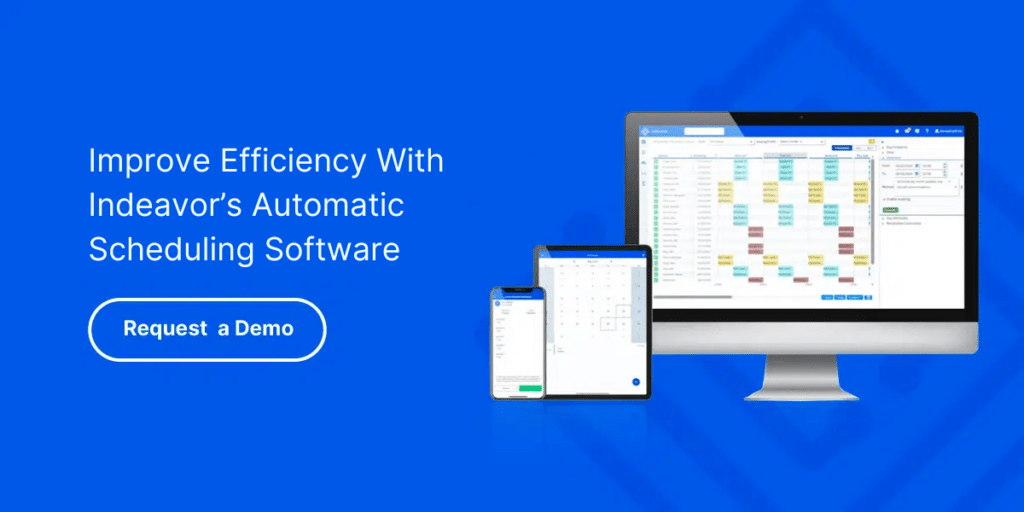Frontline workers drive essential industries like manufacturing, healthcare, logistics, and energy. However, unplanned absences create scheduling disruptions, lower productivity, and increase labor costs. Without a proactive frontline absence management strategy, businesses face compliance risks, last-minute scheduling chaos, and employee dissatisfaction.
Managing workforce absences effectively requires a proactive approach, leveraging technology to improve scheduling, ensure coverage, and maintain operational efficiency. By implementing best practices and using advanced absence management software, businesses can reduce absenteeism’s impact and create a more resilient workforce.
Understanding the Root Causes of Frontline Absences
Before optimizing frontline absence management, organizations must understand the common reasons behind absenteeism:
- Illness and Health Issues: Unavoidable sick days, injuries, and long-term medical conditions can lead to workforce gaps.
- Burnout and Fatigue: Overworked employees are more likely to take unscheduled time off, leading to further staffing challenges.
- Disengagement and Low Morale: Lack of job satisfaction or workplace stress can contribute to increased absenteeism.
- Seasonal Variations: Industries like retail and food production experience fluctuations in attendance due to peak demand periods.
- Compliance Considerations: Labor laws, union agreements, and leave policies impact how absences must be managed to ensure fairness and legality.
Recognizing these factors allows organizations to take a strategic approach to frontline absence management, reducing disruptions and improving employee retention.
Best Practices for Effective Absence Management
1. Implementing a Centralized Absence Tracking System
Absence management software provides real-time workforce visibility, automating scheduling adjustments and reducing compliance risks By automating leave requests, approvals, and documentation, the system reduces administrative tasks and boosts scheduling efficiency. Integration with payroll ensures accurate compensation and compliance with labor laws.
In addition to simplifying scheduling, this system improves auditability, helping organizations maintain accurate records for compliance and workforce analysis. Automated tracking of PTO balances, attendance points, and leave accruals eliminates the need for manual record-keeping. This visibility streamlines compliance reporting and enforces attendance policies, reducing disputes and enhancing workforce accountability.
2. Leveraging Data and Analytics for Proactive Absence Management
Frontline absence management software with predictive analytics helps businesses anticipate workforce disruptions before they impact operations. Analytics helps managers identify absenteeism trends and recurring patterns, enabling them to understand when and where absences are most likely to occur. With these insights, businesses can develop targeted interventions to reduce unplanned absences, such as adjusting staffing levels during high-risk periods or implementing policies that encourage attendance.
Additionally, benchmarking attendance metrics across departments or locations provides a clearer picture of workforce performance and helps set realistic goals for improvement. By using absence management software, companies can streamline data collection, uncover key trends, and make informed decisions that enhance workforce planning and scheduling efficiency.
3. Utilizing Flexible Scheduling to Minimize Disruptions
Offering flexible scheduling options can significantly improve workforce availability while supporting employee needs. Effective strategies include:
- Shift Swapping: Allowing employees to trade shifts through a digital platform reduces last-minute absences.
- Employee Self-Service: Empowering workers to select or bid on shifts enhances engagement and accountability.
- Cross-Training Employees: Ensuring workers are trained for multiple roles increases adaptability and prevents workflow disruptions.
Balancing flexibility with compliance is critical to successful frontline absence management, ensuring fair scheduling while meeting operational demands.
4. Strengthening Employee Engagement and Well-Being
Absenteeism often stems from workplace dissatisfaction. Addressing employee engagement can reduce unplanned absences and improve retention. Best practices include:
- Work-Life Balance Initiatives: Encouraging reasonable work hours and rest periods prevents burnout.
- Incentive Programs: Offering attendance-based rewards or extra shift compensation motivates employees.
- Clear Communication: Transparent policies regarding attendance expectations and scheduling changes foster trust and accountability.
Prioritizing employee well-being leads to a more engaged workforce and strengthens overall frontline absence management strategies.
5. Streamlining Call-Off Management with Technology
Managing last-minute call-offs manually is both inefficient and stressful. By automating the process with a 24/7 call-off management system, organizations can ensure fast and reliable shift replacements, reducing the workload for managers who would otherwise handle call-offs manually. This system also improves coverage without disrupting operations, allowing businesses to maintain smooth functioning even during unexpected absences.
Absence management software plays a crucial role in streamlining call-offs and replacements, significantly enhancing efficiency. It ensures workforce stability, even in high-demand environments, by providing a reliable and automated solution to manage shifts and maintain optimal staffing levels. This technology enables businesses to minimize disruptions and maintain seamless operations.

How Indeavor Helps Organizations Optimize Absence Management
Indeavor’s workforce management solutions empower organizations to take control of frontline absence management through automation and real-time visibility. Key features include:
- Automated Scheduling: Automated shift adjustments based on real-time workforce availability
- Advanced Absence Tracking: Centralized data for better decision-making
- Workforce Analytics: Data-driven insights to track trends, identify patterns, and optimize workforce planning
- Seamless Integration: Compliance-focused tools that align with labor laws and internal policies
By leveraging Indeavor’s technology, businesses can minimize absenteeism’s impact and ensure operational continuity.
Conclusion
A strategic frontline absence management approach is essential for maintaining workforce efficiency and reducing operational disruptions. Organizations that invest in absence management software and implement best practices—such as flexible scheduling, data-driven insights, and automated call-off management—can improve productivity while supporting employee well-being.
To optimize your absence management strategy, consider partnering with Indeavor for a technology-driven solution that ensures workforce stability and compliance. Schedule a demo today to see how Indeavor can transform your workforce management.
About the Author
Claire Pieper is the Digital Marketing Specialist for Indeavor. In her role, she specializes in crafting strategic and engaging content, ensuring that customers are well-informed. Claire is dedicated to enhancing the customer experience and optimizing the user journey through Indeavor’s solutions. To learn more or get in touch, connect with Claire on LinkedIn.



